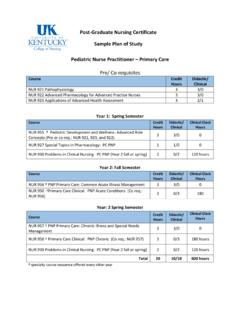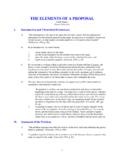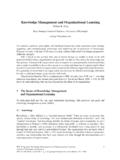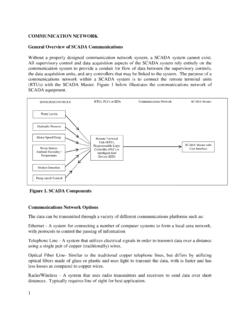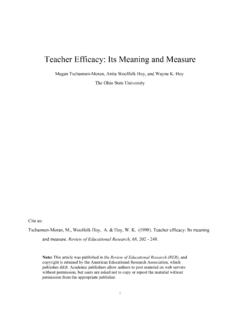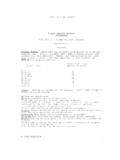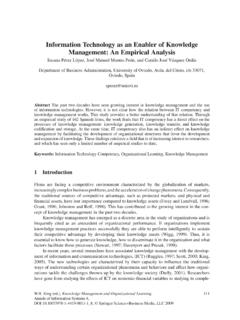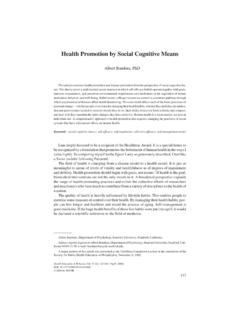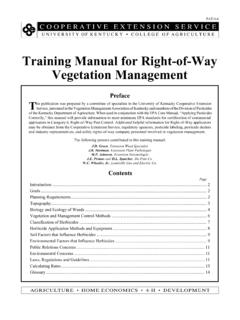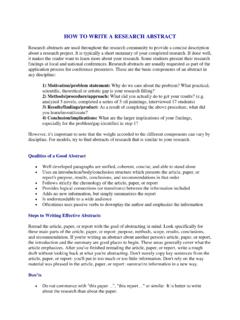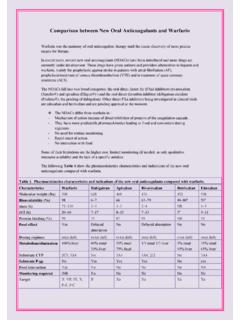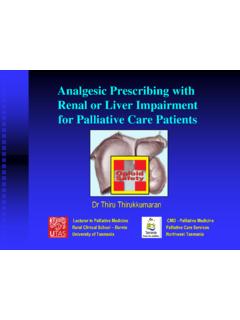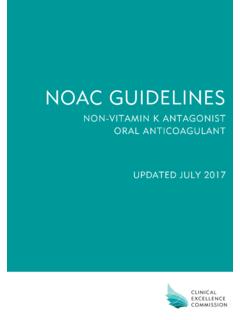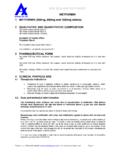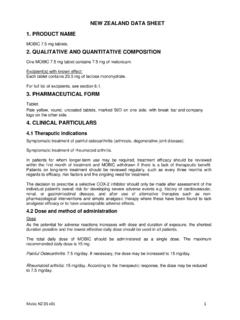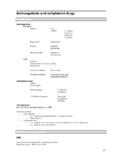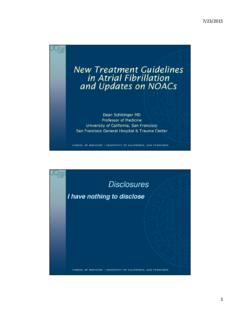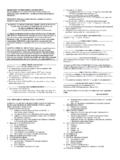Transcription of Anticoagulation in acute pulmonary embolism
1 Official reprint from UpToDate Print | Back INTRODUCTION Anticoagulation is the main therapy for acute pulmonary embolism (PE). Its goal is to decrease mortality by preventing recurrent PE. In the only trial ever performed in patients with PE comparing treatment with anticoagulants to no treatment, Anticoagulation decreased mortality [1]. Subsequent uncontrolled trials have confirmed that Anticoagulation decreases mortality [2-4]. Common questions asked by clinicians caring for patients with acute PE include: Should I initiate anticoagulant therapy? Which anticoagulant should I initiate? What is the appropriate dose? How should I monitor the treatment? What is the clinical evidence supporting its use?
2 What are the common complications? For how long should I treat? Each of these issues are reviewed here. Other aspects of the treatment of acute PE, including thrombolysis, inferior vena caval filters, and embolectomy are discussed separately. (See "Treatment of acute pulmonary embolism " and see "Fibrinolytic (thrombolytic) therapy in pulmonary embolism and deep vein thrombosis" and see "Deep vein thrombosis and pulmonary embolism in pregnancy: Treatment" and see "Deep vein thrombosis and pulmonary embolism in pregnancy: Prevention"). INITIATION OF THERAPY We recommend that Anticoagulation be initiated in all patients for whom there is a high clinical suspicion of PE or in whom PE has been confirmed. This recommendation is based upon the high incidence of mortality in untreated patients due to recurrent PE (approximately 30 percent), which outweighs the risk of major bleeding (less than 3 percent) [5-9].
3 In contrast, anticoagulant therapy should be considered on a case-by-case basis when PE has not been confirmed and the clinical suspicion of PE is low to moderate. The efficacy of anticoagulant therapy depends upon achieving a therapeutic level of Anticoagulation within the first 24 hours of treatment [10-12]. Therapeutic options include Last literature review for version : Thu Jan 01 00:00:00 GMT 2009 | This topic last updated: Mon Dec 15 00:00:00 GMT 2008 Anticoagulation in acute pulmonary embolism Author Karen A Valentine, MD, PhD Russell D Hull, MBBS, MSc Section Editor Jess Mandel, MD Deputy Editor Kevin C Wilson, MD Page 1 of 15 Anticoagulation in acute pulmonary embolism7/23/2009 low molecular weight heparin (SC LMWH), intravenous unfractionated heparin (IV UFH), subcutaneous unfractionated heparin (SC UFH), and SC fondaparinux [13]: SC LMWH is the preferred anticoagulant for most hemodynamically stable patients with PE.
4 (See "Low molecular weight heparin" below). We use IV UFH when there is persistent hypotension due to PE (ie, massive PE), an increased risk of bleeding, concern about subcutaneous absorption (eg, morbid obesity), or thrombolysis is being considered. (See "Unfractionated heparin" below). We use UFH (either IV or SC) when the creatinine clearance is 30 mL/min [14]. The rationale for this approach is two-fold. First, the efficacy of LMWH and fondaparinux in patients with PE and severe renal failure has not been well studied because most randomized trials excluded such patients. Second, severe renal insufficiency alters the pharmacokinetics of the anticoagulants, requiring that activity be monitored. It is more convenient to monitor UFH than SC LMWH because activated partial thromboplastin time (aPTT) testing is more readily available than anti-Xa assays.
5 (See "Unfractionated heparin" below). In the rare patient in whom there is a high clinical suspicion of PE but a strong contraindication to Anticoagulation (eg, active bleeding), diagnostic evaluation should be expedited. Anticoagulation -independent therapies (eg, inferior vena caval filter) should be pursued if PE is confirmed (show figure 1). (See "Treatment of acute pulmonary embolism "). LOW MOLECULAR WEIGHT HEPARIN We recommend subcutaneous low molecular weight (SC LMWH) for most hemodynamically stable patients with PE. Compared to intravenous unfractionated heparin (IV UFH), SC LMWH results in lower mortality, fewer recurrent thrombotic events, and less major bleeding [15-27]. The magnitude of these benefits was illustrated by a meta-analysis of randomized trials comparing these two approaches in patients with PE or deep vein thrombosis (DVT) [15]: In 18 trials (8054 patients), SC LMWH decreased mortality (odds ratio , 95% CI ).
6 In 22 trials (8867 patients), SC LMWH decreased recurrent thrombosis (odds ratio , 95% CI ). In 12 trials, thrombus size reduction was more common with LMWH (odds ratio , 95% CI ). Additional advantages of SC LMWH over IV UFH include greater bioavailability, more predictable pharmacokinetics, once or twice daily administration, fixed dosing that does not require adjustment, and a decreased likelihood of thrombocytopenia [13,28]. We also prefer SC LMWH to fondaparinux or SC UFH for the treatment of hemodynamically stable PE, mainly because there is greater clinical experience using SC LMWH. SC LMWH has not been directly compared to fondaparinux, but has been compared to SC UFH. Randomized trials indicate that SC LMWH and SC UFH have similar outcomes and risks, regardless of whether or not such therapy was titrated to goal aPTT: Page 2 of 15 Anticoagulation in acute pulmonary embolism7/23/2009 A trial randomly assigned 720 patients with PE or DVT to receive SC LMWH, or SC UFH titrated to a goal aPTT [29].
7 The groups had similar rates of recurrent events ( versus percent for SC UFH) and major bleeding ( versus percent for SC UFH). In a similar trial, 708 patients with PE or DVT were randomly assigned to receive SC LMWH, or an initial weight-based dose of SC UFH followed by a fixed dose [30]. The groups had similar rates of recurrent events ( versus percent for SC UFH) and major bleeding ( versus percent for SC UFH). Different formulations of SC LMWH have been infrequently compared. In one trial, 505 patients with PE or DVT were randomly assigned to receive tinzaparin or dalteparin for at least five days [31]. There was no difference in the frequency of major bleeding, recurrent PE, or recurrent DVT, suggesting that tinzaparin and dalteparin are equally safe and effective in the management of acute PE.
8 Similar trials comparing other types of LMWH are lacking. (See "Low molecular weight heparin for venous thromboembolic disease" and see "Therapeutic use of heparin and low molecular weight heparin"). Dosing Formulations of SC LMWH include enoxaparin, tinzaparin, dalteparin, nadroparin, ardeparin, and reviparin. Enoxaparin Enoxaparin can be administered subcutaneously at a dose of 1 mg/kg of actual body weight every 12 hours. Alternatively, it can be administered subcutaneously at a dose of mg/kg of actual body weight once daily. The 1 mg/kg every 12 hours regimen is preferred for patients with cancer, extensive clot burden, an actual body weight between 101 and 150 kg, or a body mass index (BMI) between 30 and 40 [22,32,33].
9 Tinzaparin Tinzaparin is administered subcutaneously at a dose of 175 international units/kg of actual body weight once daily [14]. It is contraindicated in patients who are older than 70 years and have renal insufficiency because administration of tinzaparin has been associated with increased mortality in such patients [34]. Dalteparin Dalteparin is administered subcutaneously at a dose of 200 international units/kg of actual body weight once daily (up to a maximum dose of 18,000 international units) for 30 days. It is then administered subcutaneously at a dose of 150 international units/kg of actual body weight once daily (up to a maximum dose of 18,000 international units). Patients who are >90 kg may receive less than the optimal weight-based dose of dalteparin since the maximum dose of dalteparin is 18,000 international units.
10 This increases their risk for subtherapeutic anti-Xa activity. As a result, patients who require LMWH and who are >90 kg should receive enoxaparin or tinzaparin, rather than dalteparin. Monitoring Monitoring anti-Xa levels is not necessary for most patients receiving LMWH. However, it may be warranted in special circumstances, such as morbid obesity, low body weight, renal insufficiency, and pregnancy. Morbid obesity The adequacy of subcutaneous absorption of LMWH is a concern in Page 3 of 15 Anticoagulation in acute pulmonary embolism7/23/2009 obese individuals (BMI >40). Thus, titration of the dose to a therapeutic anti-Xa level may be desirable in this situation. Low body weight Patients with low body weight (<45 kg women, <57 kg men) appear to have increased exposure to the anticoagulant effects of LMWH, even at prophylactic doses [35].
